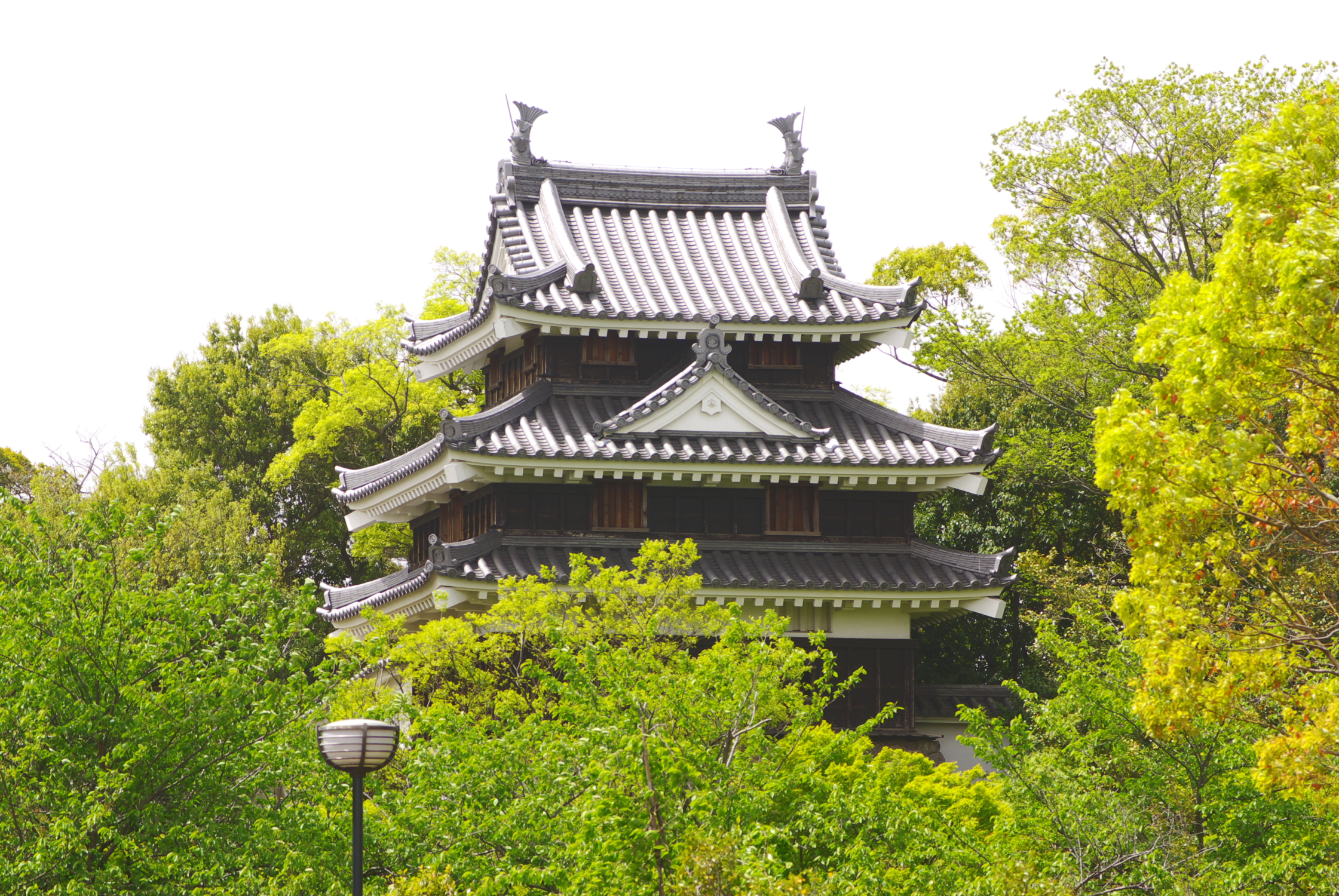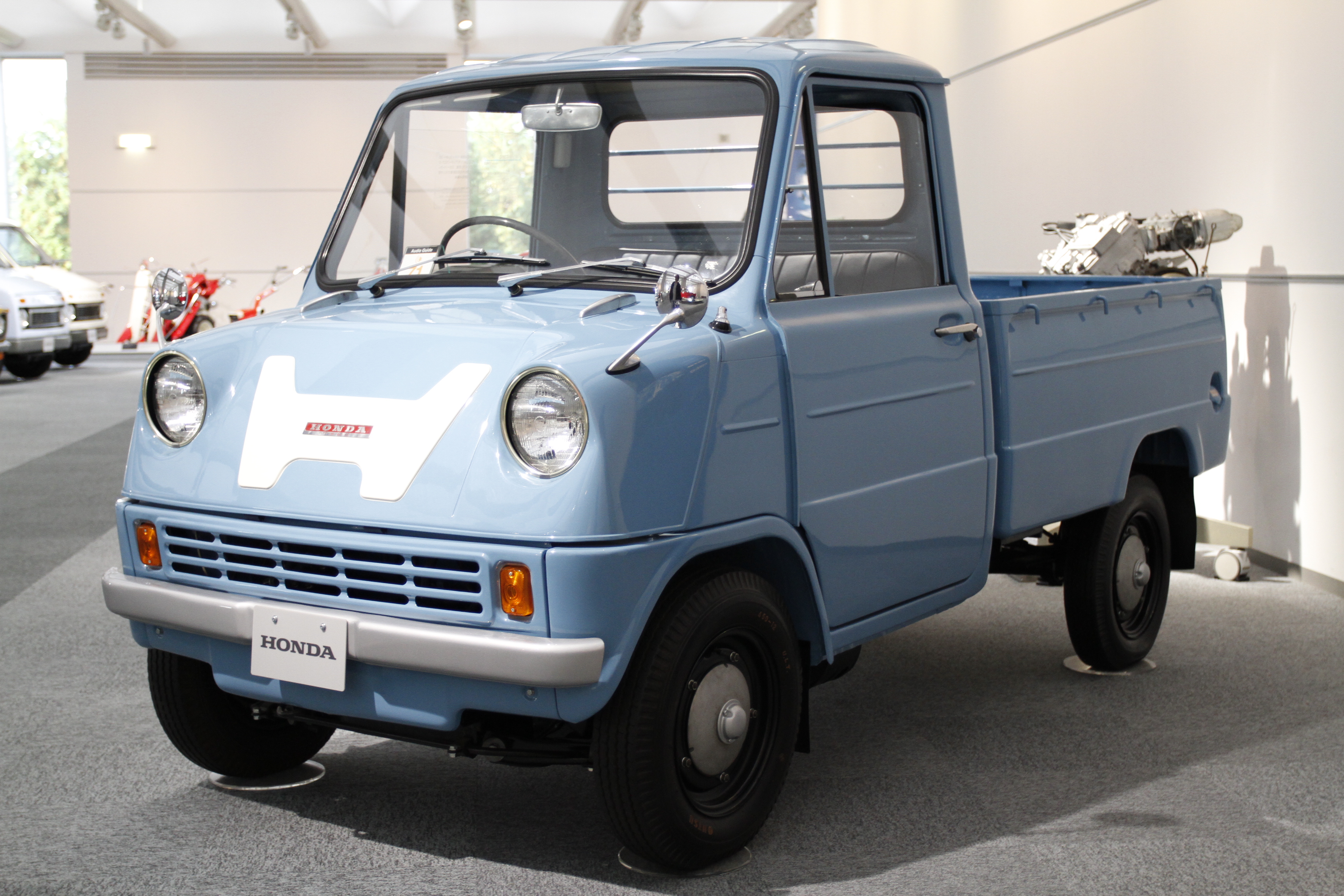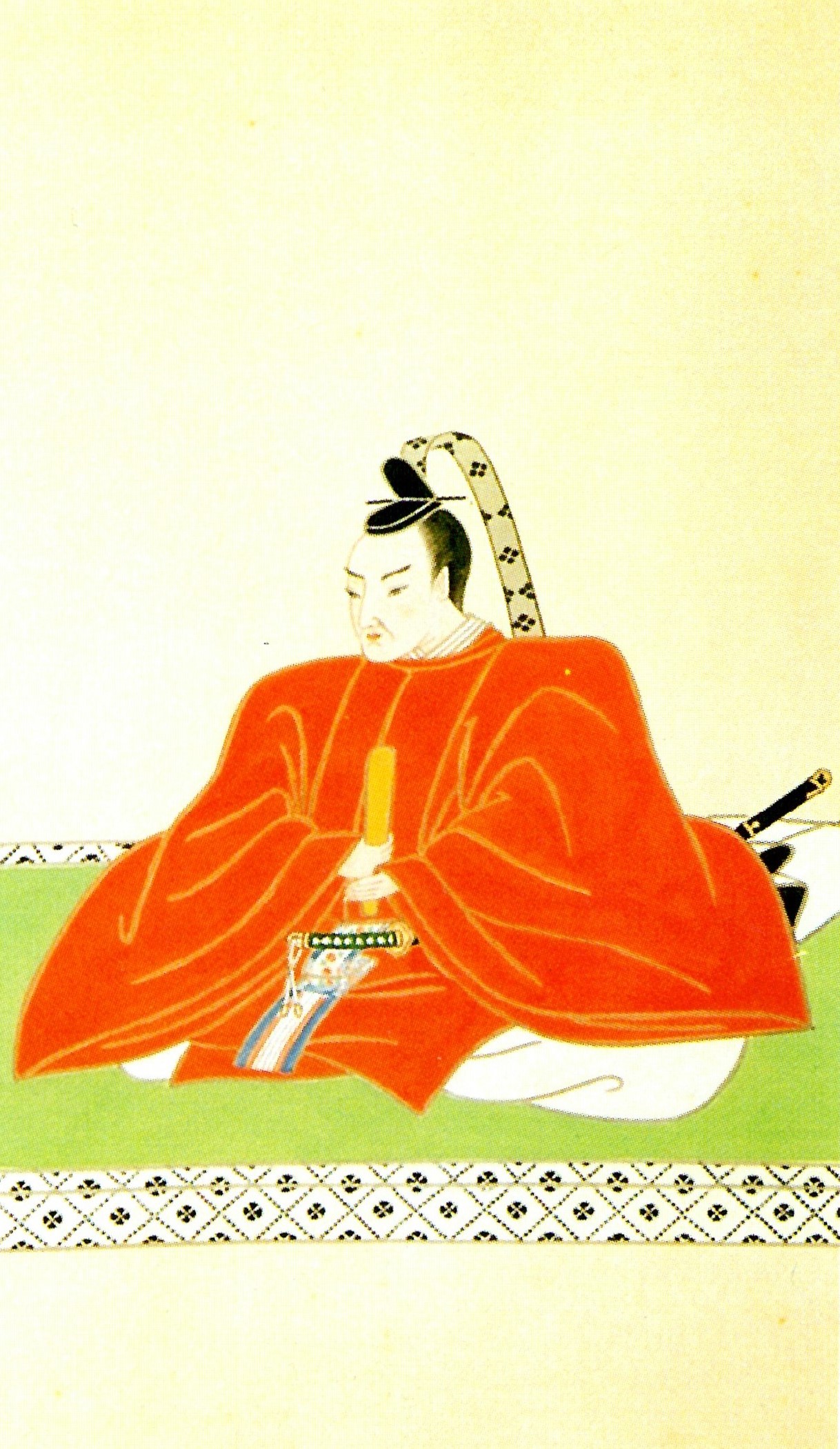|
Honda Yasutoshi (1569–1621)
(1570 – March 29, 1622) was a Japanese samurai of the Azuchi–Momoyama Period through early Edo period, who served the Tokugawa clan; he later became a ''daimyō''. Yasutoshi was the second son of Sakai Tadatsugu; after a time as a hostage to the Oda clan; he was adopted by Honda Tadatsugu in 1580. Upon Tokugawa Ieyasu's move to the Kantō region in 1590, Yasutoshi was granted 5,000 ''koku'' of land in Shimōsa Province. Yasutoshi served at the Battle of Sekigahara in 1600, for his service there, he was awarded with lordship of the Nishio Domain of Mikawa (20,000 ''koku''). During the Siege of Osaka in 1614, he defended Zeze Castle, and during the battles in the following year, took part in the actual fighting, reportedly taking over 105 heads. As a reward for his service at Osaka, he was moved to the Zeze Domain was a '' fudai'' feudal domain under the Tokugawa shogunate of Edo period Japan. It was located in southern Ōmi Province, in the Kansai region of central Hon ... [...More Info...] [...Related Items...] OR: [Wikipedia] [Google] [Baidu] |
Zeze Castle Kuromon
Zeze may refer to: People * Zezé (footballer, 1899-unknown), full name José Carlos Guimarães, Brazilian football winger * Zezé Procópio (1913-1980), Brazilian football midfielder * Zezé Macedo (1916-1999), Brazilian comedienne and actress * Zezé Moreira (1917-1998), Brazilian footballer and football manager * Zezé Gonzaga (1926-2008), Brazilian singer and entertainer * Zézé (footballer, 1942-2006), full name José Gilson Rodriguez, Brazilian football forward * Zezé Motta (born 1944), Brazilian actress and singer * Zezé Polessa (born 1953), Brazilian actress * Zézé Gamboa (born 1955), Angolan filmmaker * Zezé Perrella (born 1956), Brazilian politician * Zezé (footballer, 1957-2008), Brazilian football centre-forward * Takahisa Zeze (born 1960), Japanese film director and screenwriter * Zezé Assis (1962-2007), Angolan basketball player * Zezé Di Camargo (born 1963), Brazilian singer, part of the Zezé Di Camargo & Luciano musical duo * Zézé (basketball) (born ... [...More Info...] [...Related Items...] OR: [Wikipedia] [Google] [Baidu] |
Nishio Domain
was a feudal domain of the Tokugawa shogunate of Edo period Japan, located in former Mikawa Province, in what is now the modern-day city of Nishio in Aichi Prefecture, Japan. It was centered on Nishio Castle. History When Tokugawa Ieyasu became independent of the Imagawa clan in 1561, he established Nishio Castle, and assigned his close hereditary retainer, Sakai Masachika to become its first castellan. It was a mark of Ieyasu’s favor and trust, as Sakai Masachika was the first of Ieyasu’s retainers to be so honored. Following the Battle of Sekigahara, the Sakai clan was reassigned to more lucrative territories in western Japan, and was replaced by a branch of the Honda clan as first rulers of the new Nishio-han. The domain changed hands with almost every generation, reverting for periods to ''tenryō'' status under direct control of the Tokugawa shogunate. The Doi clan held the territory for almost 100 years (1663-1747), and the Ogyu branch of the Matsudaira clan ... [...More Info...] [...Related Items...] OR: [Wikipedia] [Google] [Baidu] |
1622 Deaths
Sixteen or 16 may refer to: *16 (number), the natural number following 15 and preceding 17 *one of the years 16 BC, AD 16, 1916, 2016 Films * '' Pathinaaru'' or ''Sixteen'', a 2010 Tamil film * ''Sixteen'' (1943 film), a 1943 Argentine film directed by Carlos Hugo Christensen * ''Sixteen'' (2013 Indian film), a 2013 Hindi film * ''Sixteen'' (2013 British film), a 2013 British film by director Rob Brown Music *The Sixteen, an English choir *16 (band), a sludge metal band * Sixteen (Polish band), a Polish band Albums * ''16'' (Robin album), a 2014 album by Robin * 16 (Madhouse album), a 1987 album by Madhouse * ''Sixteen'' (album), a 1983 album by Stacy Lattisaw *''Sixteen'' , a 2005 album by Shook Ones * ''16'', a 2020 album by Wejdene Songs * "16" (Sneaky Sound System song), 2009 * "Sixteen" (Thomas Rhett song), 2017 * "Sixteen" (Ellie Goulding song), 2019 *"16", by Craig David from ''Following My Intuition'', 2016 *"16", by Green Day from ''39/Smooth'', 1990 *"16", by H ... [...More Info...] [...Related Items...] OR: [Wikipedia] [Google] [Baidu] |
16th-century Births
The 16th century begins with the Julian year 1501 ( MDI) and ends with either the Julian or the Gregorian year 1600 ( MDC) (depending on the reckoning used; the Gregorian calendar introduced a lapse of 10 days in October 1582). The 16th century is regarded by historians as the century which saw the rise of Western civilization and the Islamic gunpowder empires. The Renaissance in Italy and Europe saw the emergence of important artists, authors and scientists, and led to the foundation of important subjects which include accounting and political science. Copernicus proposed the heliocentric universe, which was met with strong resistance, and Tycho Brahe refuted the theory of celestial spheres through observational measurement of the 1572 appearance of a Milky Way supernova. These events directly challenged the long-held notion of an immutable universe supported by Ptolemy and Aristotle, and led to major revolutions in astronomy and science. Galileo Galilei became a champion ... [...More Info...] [...Related Items...] OR: [Wikipedia] [Google] [Baidu] |
Samurai
were the hereditary military nobility and officer caste of medieval and early-modern Japan from the late 12th century until their abolition in 1876. They were the well-paid retainers of the '' daimyo'' (the great feudal landholders). They had high prestige and special privileges such as wearing two swords and ''Kiri-sute gomen'' (right to kill anyone of a lower class in certain situations). They cultivated the '' bushido'' codes of martial virtues, indifference to pain, and unflinching loyalty, engaging in many local battles. Though they had predecessors in earlier military and administrative officers, the samurai truly emerged during the Kamakura shogunate, ruling from 1185 to 1333. They became the ruling political class, with significant power but also significant responsibility. During the 13th century, the samurai proved themselves as adept warriors against the invading Mongols. During the peaceful Edo period (1603 to 1868), they became the stewards and chamberlains of ... [...More Info...] [...Related Items...] OR: [Wikipedia] [Google] [Baidu] |
Honda Toshitsugu
is a Japanese public multinational conglomerate manufacturer of automobiles, motorcycles, and power equipment, headquartered in Minato, Tokyo, Japan. Honda has been the world's largest motorcycle manufacturer since 1959, reaching a production of 400 million by the end of 2019, as well as the world's largest manufacturer of internal combustion engines measured by volume, producing more than 14 million internal combustion engines each year. Honda became the second-largest Japanese automobile manufacturer in 2001. In 2015, Honda was the eighth largest automobile manufacturer in the world. Honda was the first Japanese automobile manufacturer to release a dedicated luxury brand, Acura, in 1986. Aside from their core automobile and motorcycle businesses, Honda also manufactures garden equipment, marine engines, personal watercraft, power generators, and other products. Since 1986, Honda has been involved with artificial intelligence/robotics research and released their ASIMO rob ... [...More Info...] [...Related Items...] OR: [Wikipedia] [Google] [Baidu] |
Toda Ujikane
was a Japanese ''daimyō.'' In 1617, he helped build the Amagasaki Castle was a flatland type Japanese castle located in the city of Amagasaki, Hyōgo Prefecture, Japan. The castle was the headquarters of Amagasaki Domain, which ruled this portion of northern Settsu Province under the Tokugawa shogunate of Edo Perio .... References , - , - Daimyo 1576 births 1655 deaths Deified Japanese people {{daimyo-stub ... [...More Info...] [...Related Items...] OR: [Wikipedia] [Google] [Baidu] |
Matsudaira Shigenari
The was a Japanese samurai clan that descended from the Minamoto clan. It originated in and took its name from Matsudaira village, in Mikawa Province (modern-day Aichi Prefecture). During the Sengoku period, the chieftain of the main line of the Matsudaira clan, Matsudaira Motoyasu became a powerful regional daimyo under Oda Nobunaga and Toyotomi Hideyoshi and changed his name to Tokugawa Ieyasu. He subsequently seized power as the first shōgun of the Tokugawa shogunate which ruled Japan during the Edo period until the Meiji restoration of 1868. Under the Tokugawa shogunate, many cadet branches of the clan retained the Matsudaira surname, and numerous new branches were formed in the decades after Ieyasu. Some of those branches were also of ''daimyō'' status. After the Meiji Restoration and the abolition of the ''han'' system, the Tokugawa and Matsudaira clans became part of the new nobility. Origins The Matsudaira clan originated in Mikawa Province. Its origins are uncer ... [...More Info...] [...Related Items...] OR: [Wikipedia] [Google] [Baidu] |
Zeze Domain
was a '' fudai'' feudal domain under the Tokugawa shogunate of Edo period Japan. It was located in southern Ōmi Province, in the Kansai region of central Honshu. The domain was centered at Zeze Castle, located on the shore of Lake Biwa in what is now the city of Ōtsu in Shiga Prefecture. History Zeze controlled entry into Kyoto from the east, and was thus of great strategic importance to the Tokugawa shogunate. As with many of the ''fudai'' domains of the early Edo period, the control of Zeze Domain changed frequently between various clans; however, after the appointment of a cadet branch of the Honda clan in 1651, the domain remained under Honda control until the end of the shogunate. With a ''kokudaka'' of 70,00 ''koku'' at its height, it was the second largest domain in Ōmi Province after Hikone Domain. In 1601, shortly after the Battle of Sekigahara, Tokugawa Ieyasu ordered then construction of Zeze Castle, and assigned Toda Kazuaki, formerly 5000 ''koku'' ''hatamoto'' ... [...More Info...] [...Related Items...] OR: [Wikipedia] [Google] [Baidu] |
Zeze Castle
thumbnail, 260px, aerial photograph of site of Zeze Castle thumbnail, 260px, Edo period layout of Zeze Castle , is a ''hirashiro''-style Japanese castle located in eastern part of the city of Ōtsu, Shiga Prefecture, Japan. Overview Zeze Castle is located on a peninsula jutting into Lake Biwa. Almost immediately after the Battle of Sekigahara, Tokugawa Ieyasu order the destruction of Ōtsu Castle and the construction of a new castle at this location in order to control the Tōkaidō highway connecting Kyoto with Edo and the provinces of eastern Japan. This was the most important highway in Edo Period Japan, and the location of Zeze Castle was even more strategically important as it was close to the Seta-no-Karahashi, an ancient bridge which marked the entrance to the capital. The layout of the castle was planned by Todo Takatora, who already had a reputation for castle design. The construction work was assigned to the major western ''daimyō'', with many materials from the ... [...More Info...] [...Related Items...] OR: [Wikipedia] [Google] [Baidu] |
Siege Of Osaka
The was a series of battles undertaken by the Japanese Tokugawa shogunate against the Toyotomi clan, and ending in that clan's destruction. Divided into two stages (winter campaign and summer campaign), and lasting from 1614 to 1615, the siege put an end to the last major armed opposition to the shogunate's establishment. The end of the conflict is sometimes called the , because the era name was changed from Keichō to Genna immediately following the siege. Background When Toyotomi Hideyoshi died in 1598, Japan came to be governed by the Council of Five Elders, among whom Tokugawa Ieyasu possessed the most authority. After defeating Ishida Mitsunari in the battle of Sekigahara in 1600, Ieyasu essentially seized control of Japan for himself, and abolished the Council. In 1603, the Tokugawa shogunate was established, with its capital at Edo. Hideyori and his mother Yodo-dono were allowed to stay at Osaka Castle, a fortress that had served as Hideyoshi's residence and he f ... [...More Info...] [...Related Items...] OR: [Wikipedia] [Google] [Baidu] |





